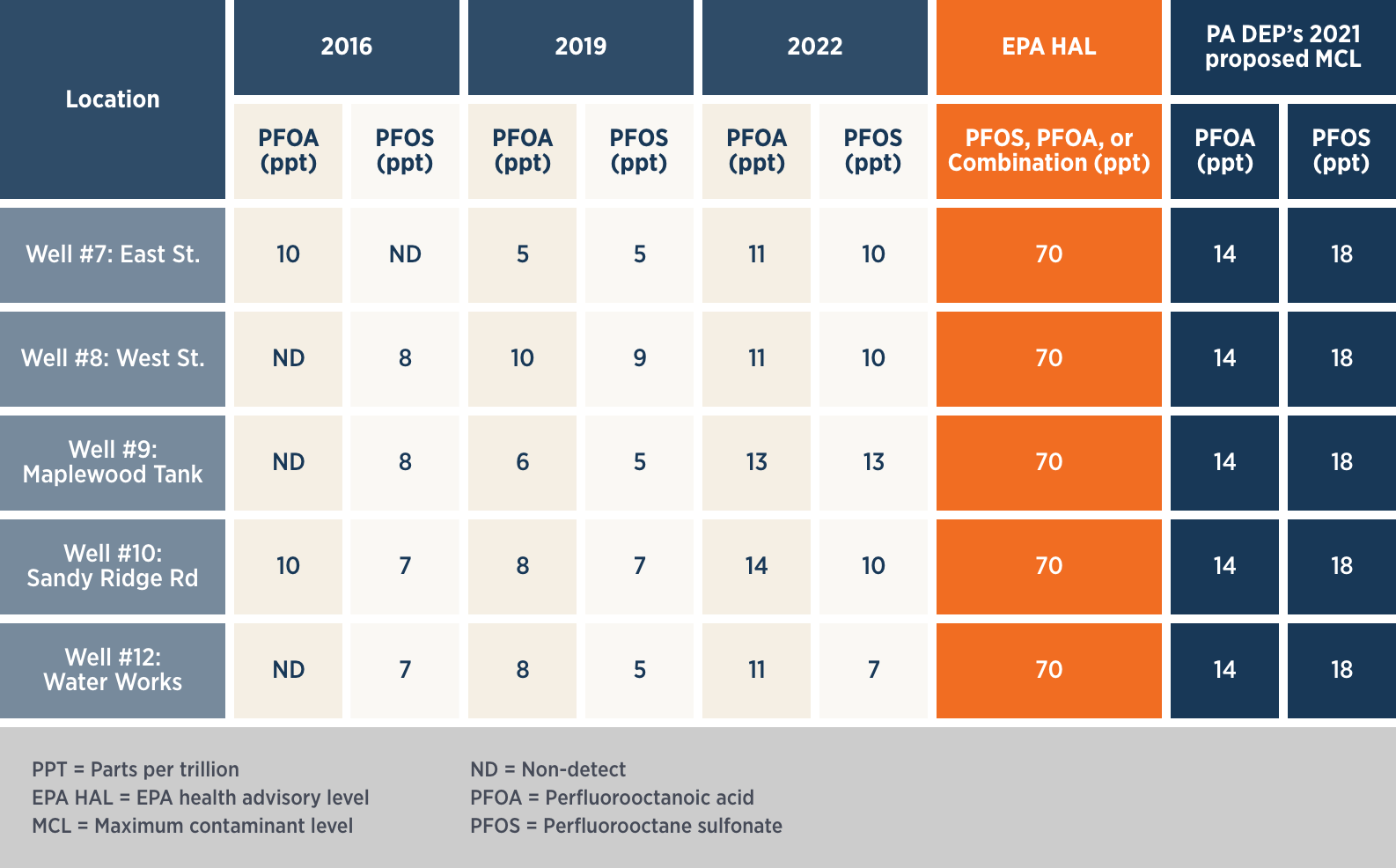How is Doylestown affected by PFAS?
Beyond the obvious health concerns, the impact of PFAS on a small water system like Doylestown Boroughs is enormous. The costs of installing PFAS treatment systems run into the millions of dollars, and these systems must then be maintained and monitored. This places a heavy burden on an annual budget of less than $1.5 million.
Treatment Analysis
Are other local water systems dealing with PFAS issues?
The Borough of Doylestown is not in a unique position when it comes to dealing with PFAS issues. Many other local water systems also have PFAS present in their source water. This includes Doylestown Township, who has an interconnection with the Borough. This interconnection allows both systems to give and take water when needed and helps supplement system capacity during emergency situations.
What has Doylestown Borough done to address PFAS in the water system?
The Borough commissioned CKS Engineering to perform a study and create a proposal that will detail which treatment options work best for the Borough’s water system and the cost associated with such treatment upgrades. The completed report is now available below.
What happens if PA DEP’s final MCL ruling is higher than the EPA’s recent health advisory?
There is no significant difference in treatment systems and infrastructure to treat PFAS to the EPA’s health advisory level of <0.004, compared to PA DEP’s proposed MCL of 14 & 18 ppt. Therefore, any treatment system that is installed will have the goal of meeting the EPA’s health advisory and treat to zero.
Will funding be available for these treatment upgrades?
It appears that a significant amount of federal and state funding may be available to help get the treatment upgrades needed. Under the Bipartisan Infrastructure Law up to $5 billion will become available between 2022-2026. These funds are being made available to help combat “emerging contaminants”, including PFOA and PFOS. Eligible applicants for this grant funding need to meet a certain criterion as either a “Disadvantaged Community” or “Small Community”. Doylestown Borough meets the small community criteria, with a population of less than 10,000, according to the latest census data.









